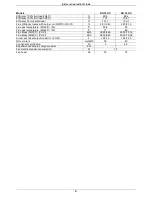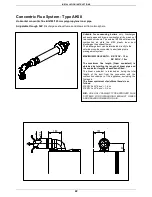
INSTALLATION INSTRUCTIONS
15
3.7 Water connections
In order to safeguard the heat exchanger and
circulation pump, especially in case of boiler
replacement, it is recommended that the
system is hot-flushed to remove any impurities
(especially oil and grease) from the pipes and
radiators.
Make sure that the central heating pipe are is
used to earth the electrical system. The pipes
are totally unsuitable for this purpose.
Isolation Valves must be installed on the
heating. This will facilitate all maintenance and
service operations where the boiler needs to
be drained.
■
To prevent vibration and noise coming from
■
the system, do not use pipes of reduced diameter,
short radius elbows or severe reductions in the
cross sections of the water passages.
■
To facilitate the installation, the boiler is supplied
with an hydraulic connection kit (see fig.2).
Central heating circuit
In order to prevent scaling or deposits in the primary heat
exchanger, the mains supply water to the heating circuit
must be treated according to the requirements of local
standards.
This treatment is indispensable in the case where the circuit
is frequently topped-up or when the system is often either
partially or fully drained.
The outlet connection of the boiler safety valve must be
connected to a discharge trap. The manufacturer will not
be held responsible for flooding caused by the operation of
the safety valve in the case of system overpressure.
Condensate Drain
The condensate drain flexible pipe supplied with the
boiler (conforming to UNI EN 677 standard) must be
connected to a proper condensate trap. The
condensate discharge into the drainage system is
allowed providing a condensate trap (siphon) is
installed.
Any condensate discharge pipe work external to the
building (or in an unheated part of it) must be insulated
to protect against frost. Before switching the boiler On,
check the correct condensate discharge.
50
HR
HF
CD
G
1/2"
3/4"
Ø22
Fig. 1
83735LP
43002LA
43001LA
67018LA
43001LA
83735LP
84149LP
Ø 22 mm
Ø 15 mm
Ø 22 mm
Fig. 2
















































